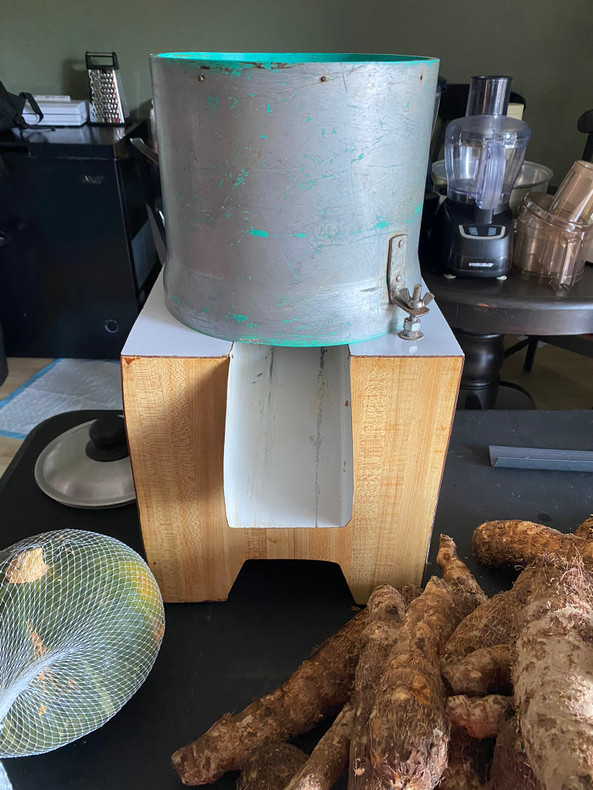Over the weekend, my cousins and I embarked on a culinary adventure to recreate our family recipe for pasteles and alcapurrias. It not only brought us closer together but also served as a heartwarming tribute to our mothers and the generations before us. With the holiday season approaching, what better time for celebrating and reconnecting with cherished family traditions?
Gathered in the kitchen, we began our weekend armed with memories and recipes passed down through the years. Each cousin brought a unique perspective and contribution because, as children, we played a role in creating these culinary delights. Memories of our mothers working on making pasteles flooded our minds as we peeled plantains, chopped calabaza, and grated yautía, recalling those times. We even had the makeshift plátano grinder our aunt Carmen used to make her award-winning pasteles. Back then, there was no kitchen-aid plantain masher or anything like it, so one of our uncles made one with plumber piping, a sturdy laminate wooden box, some motor, a homemade grinder blade, and a light switch. A regular blender could never grind them to the consistency a handheld grater could achieve.
The weekend brought back laughter and stories, and we shared togetherness as we carried on our mothers’ legacy. Each cousin had their specialty, excelling in different aspects of the process. Some prepared the flavorful fillings, while others perfected the art of shaping and wrapping the pasteles and alcapurrias. Through collaboration and teamwork, we pieced together the puzzle of our family recipe, and I’m proud to say we nailed it!
Pasteles and alcapurrias are traditional Puerto Rican dishes typically made during the holidays. Pasteles are like Mexican tamales, but instead of corn, they are made with a dough of mashed plantains, green bananas, and other root vegetables. Alcapurrias are made with a dough of grated plantain or green bananas, stuffed with meat or seafood, and deep-fried. Pasteles are wrapped in banana leaves and boiled before serving.
These dishes are not only tasty but also rich in history and culture. They reflect the fusion of indigenous, African, and Spanish influences that shaped Puerto Rican cuisine. They also represent the resilience and creativity of our ancestors, who used the resources available to them to create nourishing and satisfying meals. By making these dishes, we honor their legacy and keep their spirit alive.
We hope you enjoyed reading about our memorable weekend with our cousins. If you have a similar story or experience, we would love to hear from you. Feel free to share your comments or contact us through our social media channels. Thank you for visiting our blog, and stay tuned for more updates!

